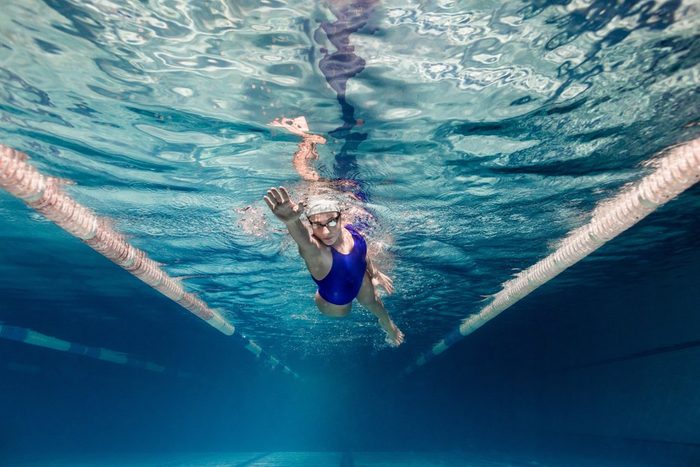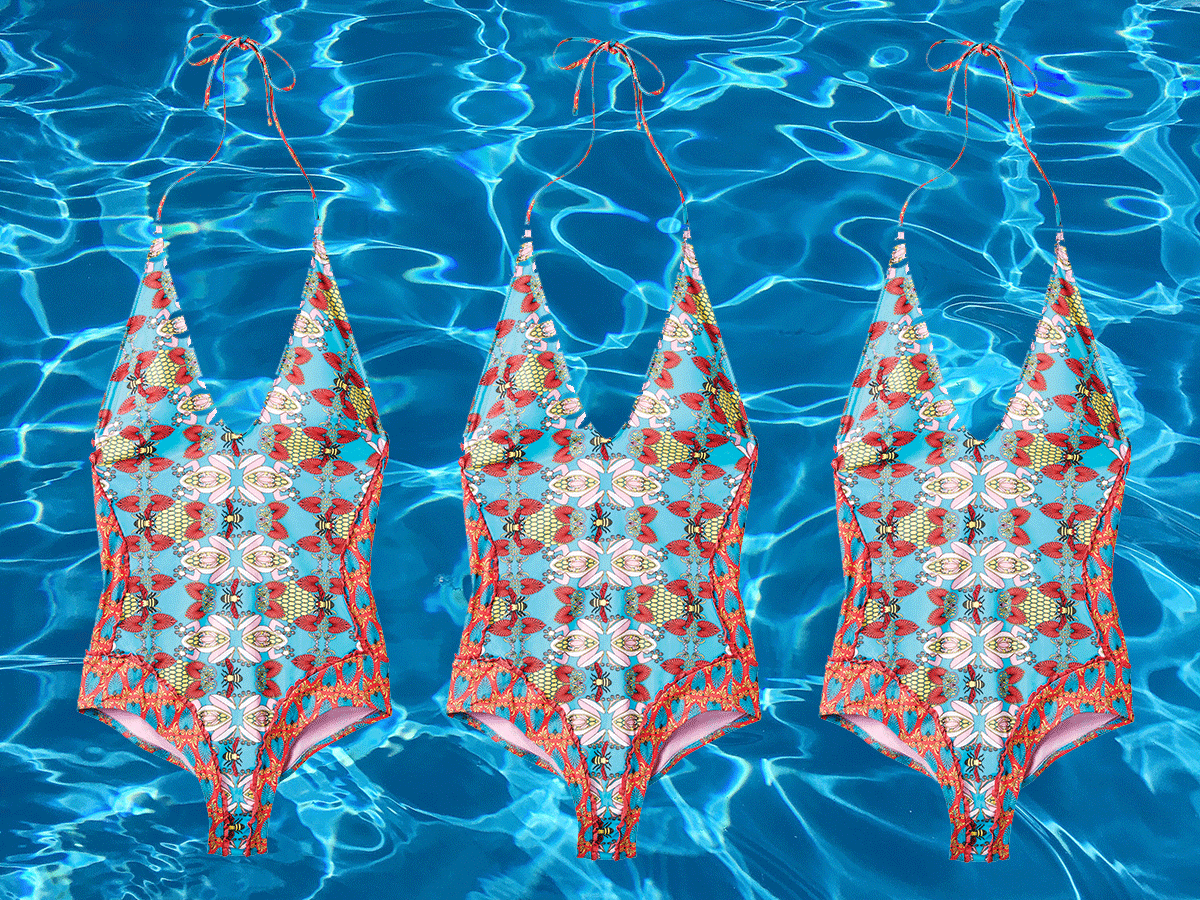11 Ways You’ve Been Swimming All Wrong

New swimming methods are helping us discover more efficient ways to move in the water.
Not the same old stroke
Chances are if you took swimming lessons as a child you learned techniques that can actually slow you down in the water. That’s right: Thanks to technological advances that now allow experts to view athletes underwater—not to mention elite athletes themselves, who are continually showing us new world-class techniques—we’re rethinking the most efficient ways to move through the water. In other words, it’s time to scrap what you learned as a Tiny Tadpole. “Swimming is perhaps evolving faster than other sports because we’re now able to look at parameters that have never been studied before,” says three-time Olympian, and three-time medalist, Gary Hall, Sr, technical director and head coach of The Race Club swimming camp in the Florida Keys, who studies swim technique. “For the first time, I feel like we’re now able to look under the hood and examine the small parts that make up the engine. It’s exciting because we’re learning as we go, and our research is creating a new breed of technique coaches.”
Below, experts share which swimming mistakes you’ve been making all along.
1. Always bending arms in air
One distinguishing feature of the front crawl (aka freestyle) stroke is bending your arm during the “recovery” phase (when your arm is out of the water). Not so anymore, says Jenny McCuiston, two-time Olympic Swimming Trial qualifier and founder of Goldfish Swim School. “Everyone used to think this was the most efficient way to swim, but then a few swimmers came out with a straight-arm recovery and they were actually swimming faster,” she says. While distance swimmers may still benefit from the bent-arm technique, sprinters are increasingly trying the straight-arm recovery, she adds.
2. Looking forward
“Most swimmers are taught to look forward underwater, and now you want to look down and your head should be submerged after the breath in order to move faster in the water,” says Hall. Find yourself easily out of breath when swimming? These swimming workouts will boost your cardio, stat.
3. Sculling with your arms
Forget the S-shaped underwater pull. “When I learned to swim, I learned sculling, making a quick S-shaped motion as you move forward,” says Douglas Graustein, aquatics regional manager at Life Time Fitness in Royal Oak, Michigan. “Recently, though, we’ve learned that efficient swimming is so simple: If you want to go forward in the water, you have to push the water behind you. I like to call it aqua-dynamics.” When your hand enters the water, point fingertips downward while elbow pops up, then push back. “This applies for backstroke, butterfly, and freestyle,” he adds.
4. Keeping your fingers together
You may have been taught to keep your hands together like a paddle when moving through the water, but it’s time to scrap that advice. “We’ve discovered that separating the fingers and the thumb increases propulsion through the water more than squeezing your fingers together,” says Hall.
5. Making movements too large
The frog kick is now a thing of the past, say our experts. “Now, it’s a much more narrow kick, with a snapping, whip-like motion,” says McCuiston. Rather than a large out-and-in motion with your legs, your knees should only come apart a few inches, adds Graustein. The same goes for your arms. “Your hands should stay in front of you the entire time and when you’re initiating a pull and your hands separate, they shouldn’t go more than shoulder-width apart, so it’s really a much smaller circle than people think,” he says.
6. Staying flat in the water
Speaking of breaststroke, another common misconception is that it’s a flat, forward motion. Not so anymore, says Hall. “This is a great example of how strokes have evolved over the years,” he says. “When you look back to the 1970s, swimmers would swim flat, they wouldn’t elevate much. What that’s doing, though, is creating more drag underwater,” he says. Instead, the breaststroke should look more like the butterfly, with a waving, undulating motion, says Graustein. “When I show people this, they often are surprised but comment on how much difference it makes.”
7. Overthinking the kick
Generating bubbles when you’re doing a backstroke kick? Then you’re doing it right. “The proper kick technique can be tricky, it requires an intuition for how the water feels around you,” says Graustein. “I either see people bending knees too much, like a bicycle kick, or being too straight and rigid.” Your kick should generate from the hip, with knees loose and not locked. The trick, he says, is feeling comfortable and relaxed in the water, which translates into a more natural, flowing motion. While you’re trying not to overthink your kick, be sure to spend a little extra brainpower on remembering these pool safety tips.
8. Using the butterfly “keyhole” technique
For those who are brave—and skilled!—enough to attempt the butterfly stroke, you’ve likely learned a keyhole technique. “That’s how I learned to butterfly,” says Graustein. “It’s where you sweep your arms across, then come into the middle and push backward from there. Instead, we now know to push fingertips down with high elbows, and that’s where the power comes from.”
9. Pulling with a straight arm
For backstroke, your arms should be straight the entire time, right? Wrong, says Graustein. “Think about it: When you push your straight arm down into the water, guess what? That water is going down, and that’s not where you want that water to go,” he says. “Keep your elbow aligned with your body instead and then push; that way, your forearm is the one collecting the water, and you’re pushing it behind you instead of down.”
10. Holding your breath
The theory on breathing has changed over the years, says McCuiston. “In the 100-free I was always taught to breathe every four strokes or fewer than that, and now if you watch the Olympic athletes, they’re taking a breath every stroke,” she says. “Even in the butterfly, they’re breathing every stroke now, which I was never taught to do, so it’s definitely an interesting shift. It makes sense, though: If you’re efficient it doesn’t slow you down, and it provides more oxygen to your body which is beneficial. ”
11. Not listening to your body
What works for you may not necessarily work for your swim-lane neighbour. Age, body composition, and swim distance will all dictate your technique. “Swimming is not one-size-fits-all. As soon as we think one way is right, another swimmer emerges to prove us wrong,” he laughs. “When you look at the top-three finishers in the 1,500-meter men’s final in the last Olympics, for example, each used a different technique, because each had found what worked best for him. It’s an evolutionary time in swim-stroke research where things are changing every day.”







